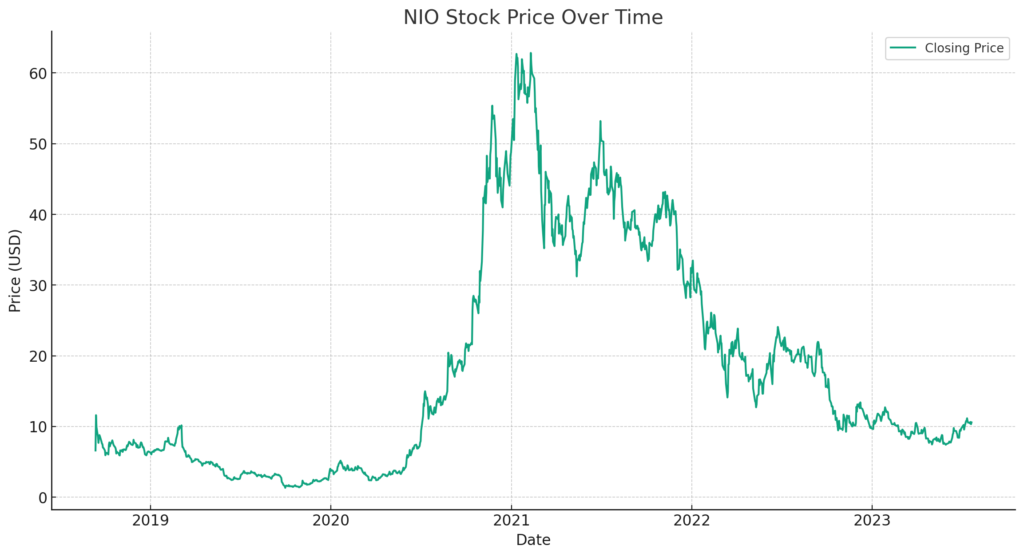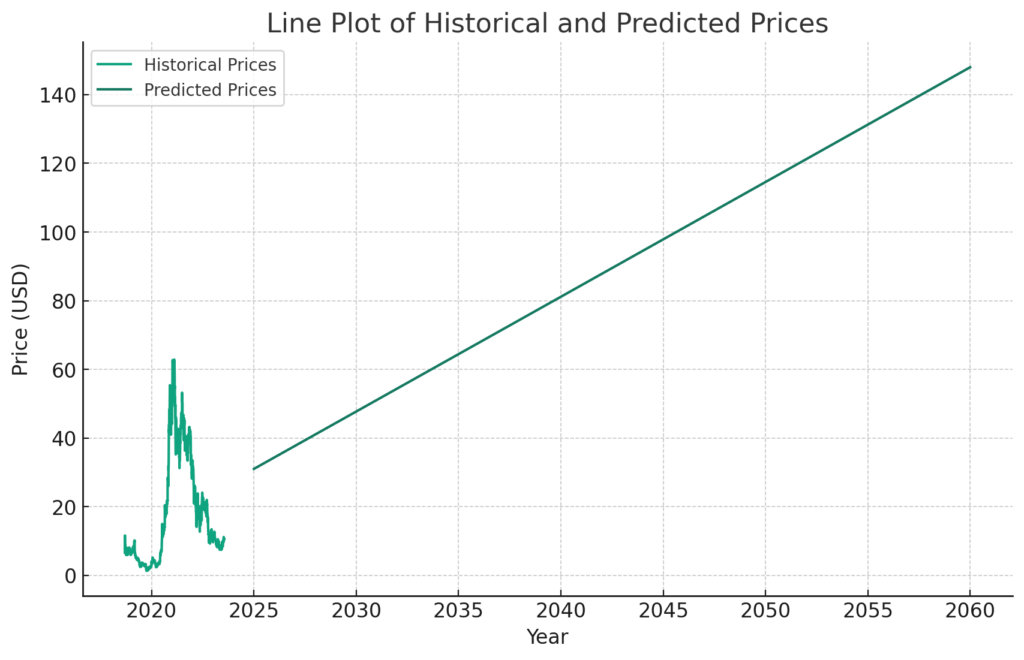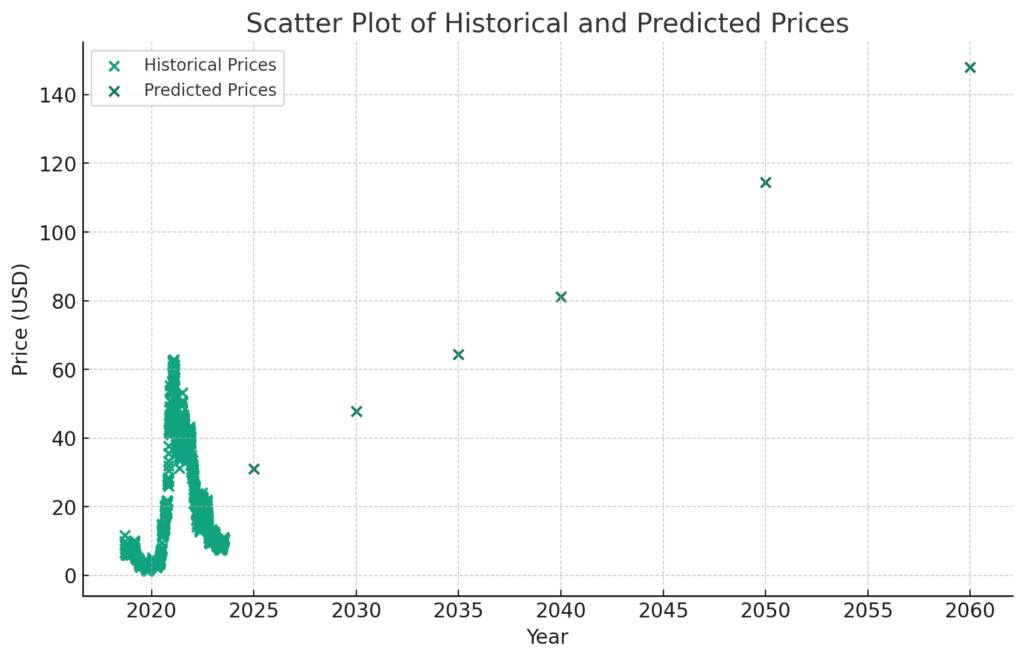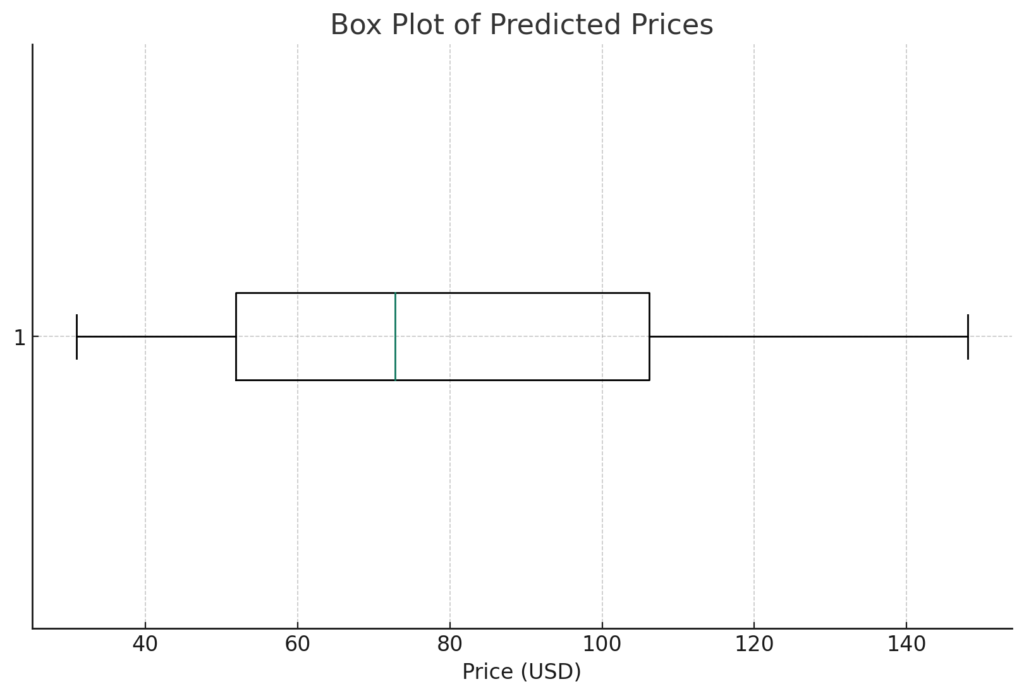NIO Stock Price Predictions for 2025, 2030, 2035, 2040, 2050, 2060

The world of finance is perpetually in flux, with stock prices bobbing like boats in a stormy sea. Predicting their course is a complex endeavor, requiring a deep understanding of both the company in question and the market at large. This article will delve into the details of one such company, NIO, and attempt to project its future stock prices using historical data and predictive modeling techniques.
China-based NIO is a key player in the electric vehicle industry, offering a compelling alternative to traditional fuel-powered cars. The company has made a significant impact on the stock market, with investors worldwide keenly watching its performance. As we move forward into a future where sustainability is increasingly vital, understanding the trajectory of companies like NIO is of paramount importance.
Disclaimer: The information provided in this article is for informational purposes only. It should not be considered financial advice. You should consult with a financial advisor or other professional to determine what may be best for your individual needs. Do not make any investment decisions based solely on the information in this article.
| Key Takeaways |
|---|
| NIO, a significant player in the electric vehicle industry, has shown a volatile yet overall upward trend in the stock market. |
| Stock price prediction is a complex process, influenced by numerous factors and requiring deep understanding of the company and market. |
| The historical data of NIO’s stock prices, sourced from NASDAQ, shows periods of rapid growth, corrections, and steady upward movement. |
| A simple linear regression model was used to predict NIO’s future stock prices, considering its simplicity and interpretability. |
| Predicted prices for the years 2025, 2030, 2035, 2040, 2050, and 2060 show a consistent upward trend, aligning with the historical data trend. |
| These predictions, represented in various plots, should be interpreted with caution as they are based on a simplistic model and do not account for many variables influencing a stock’s price. |
| Despite predictions suggesting a promising outlook, they should be taken as a starting point for further analysis rather than definitive predictions. |
Background of NIO
Founded in 2014, NIO has swiftly risen to prominence in the EV market, carving out a niche for itself with its range of high-performance electric vehicles. The company’s mission to shape a joyful lifestyle by offering premium smart electric vehicles and being the best user enterprise has propelled it to the forefront of the industry.
NIO’s performance in the stock market has been equally noteworthy. It debuted on the New York Stock Exchange in 2018 and has since displayed a volatile yet overall upward trend. From navigating the choppy waters of its early years to its recent successes, NIO’s stock price has mirrored its growth trajectory. The company’s ability to weather market fluctuations and its commitment to innovation has cemented its place in the portfolios of many investors.
Understanding Stock Price Prediction
Predicting stock prices is akin to forecasting the weather – it requires a careful study of patterns, trends, and multiple influencing factors. At its core, stock price prediction is an attempt to determine the future value of a company’s shares. This information is crucial for investors and traders looking to buy or sell stocks and make profitable decisions.
The process of predicting stock prices is fraught with challenges. The stock market is influenced by a myriad of factors, from company-specific news to global economic events. Even seemingly unrelated occurrences can cause ripples in the stock market.
Despite these complexities, several methods have been developed to predict stock prices:
- Fundamental Analysis: This involves examining a company’s financials, industry position, and market conditions to estimate its intrinsic value.
- Technical Analysis: Here, historical price data and volume trends are analyzed to predict future movements.
- Quantitative Analysis: This method uses mathematical and statistical modeling to predict future prices.
- Machine Learning Techniques: These include methods like regression, neural networks, and decision trees that learn from historical data to predict future prices.
Overview of the Dataset
The dataset used for this analysis offers a detailed view of NIO’s historical stock prices. It includes information such as the opening price, closing price, the highest price of the day, the lowest price of the day, and the volume of shares traded.
This data has been sourced from NASDAQ, a reliable and widely recognized provider of financial market data. The dataset offers an accurate and comprehensive view of NIO’s stock performance, making it an excellent basis for our predictive analysis.
The fields in the dataset are:
- Date: The date of trading.
- Close/Last: The closing price of NIO stock on the trading day.
- Volume: The number of shares traded on the trading day.
- Open: The opening price of NIO stock on the trading day.
- High: The highest price of NIO stock during the trading day.
- Low: The lowest price of NIO stock during the trading day.
Analysis of Historical NIO Stock Prices
The first step in our analysis involves understanding NIO’s historical stock prices. By studying the past, we can glean valuable insights into the company’s performance and the factors that influence its stock price.
Looking at NIO’s historical stock prices, several trends and patterns emerge. The stock price has seen significant volatility, reflecting the dynamic nature of the EV market and NIO’s growth trajectory. There have been periods of rapid growth, followed by corrections, and periods of steady upward movement. This pattern is not unusual for a high-growth company in a rapidly evolving industry.

A visual representation of these trends can be seen in the line chart of historical prices. The x-axis represents time, while the y-axis represents the stock’s closing price. The line’s upward slope indicates a general increase in NIO’s stock price over time.
Methodology for Predicting NIO Stock Prices
Predicting stock prices requires a model that can learn from historical data and extrapolate into the future. For this analysis, we’ve chosen a simple linear regression model. This model assumes a linear relationship between time and stock price, and it attempts to fit a straight line that minimally deviates from the actual prices.
The justification for using this model lies in its simplicity and interpretability. It provides a good starting point for understanding the relationship between time and stock price. However, it’s important to note that this model has its limitations.
Firstly, it assumes that the relationship between time and stock price is linear, which may not be the case. Stock prices can be influenced by numerous factors, many of which are not included in this model.
Secondly, the model assumes that the past can predict the future. While this is often a reasonable assumption, it’s not always true, especially in the dynamic world of stock markets where new information can quickly change the outlook.
Despite these limitations, the simple linear regression model can provide a baseline prediction that can be refined with more complex models and additional data. In the next section, we will present the predicted prices based on this model.
Predicted NIO Stock Prices
Armed with the simple linear regression model and the historical stock prices, we ventured into the realm of the future, predicting NIO’s stock prices for several key years ahead.
Our model predicts a steady increase in NIO’s stock price over the coming years. The predicted prices for the years 2025, 2030, 2035, 2040, 2050, and 2060 show a consistent upward trend, aligning with the general trend observed in the historical data.
| Date | Predicted Price (USD) |
|---|---|
| 2025-01-01 | 30.99 |
| 2030-01-01 | 47.71 |
| 2035-01-01 | 64.42 |
| 2040-01-01 | 81.13 |
| 2050-01-01 | 114.56 |
| 2060-01-01 | 147.99 |
Visual representations of these predictions have been provided in the form of various plots, including line plots, scatter plots, bar plots, and more. These visualizations offer a clear and concise view of the predicted prices and their progression over time.




It’s important to interpret these predictions with caution. They are based on a simplistic model and do not take into account many of the variables that can influence a stock’s price. They should be viewed as a starting point for further analysis rather than definitive predictions.
Conclusion
In conclusion, this analysis provides a glimpse into the potential future of NIO’s stock prices based on historical trends. While the predictions suggest a promising outlook, they should be taken with a grain of salt due to the inherent uncertainties and complexities in stock price prediction. As always in the world of finance, due diligence and a comprehensive understanding of the market are crucial.
References
All data used in this analysis have been sourced from NASDAQ, a trusted provider of financial market data. Further details and up-to-date information can be found on their website.